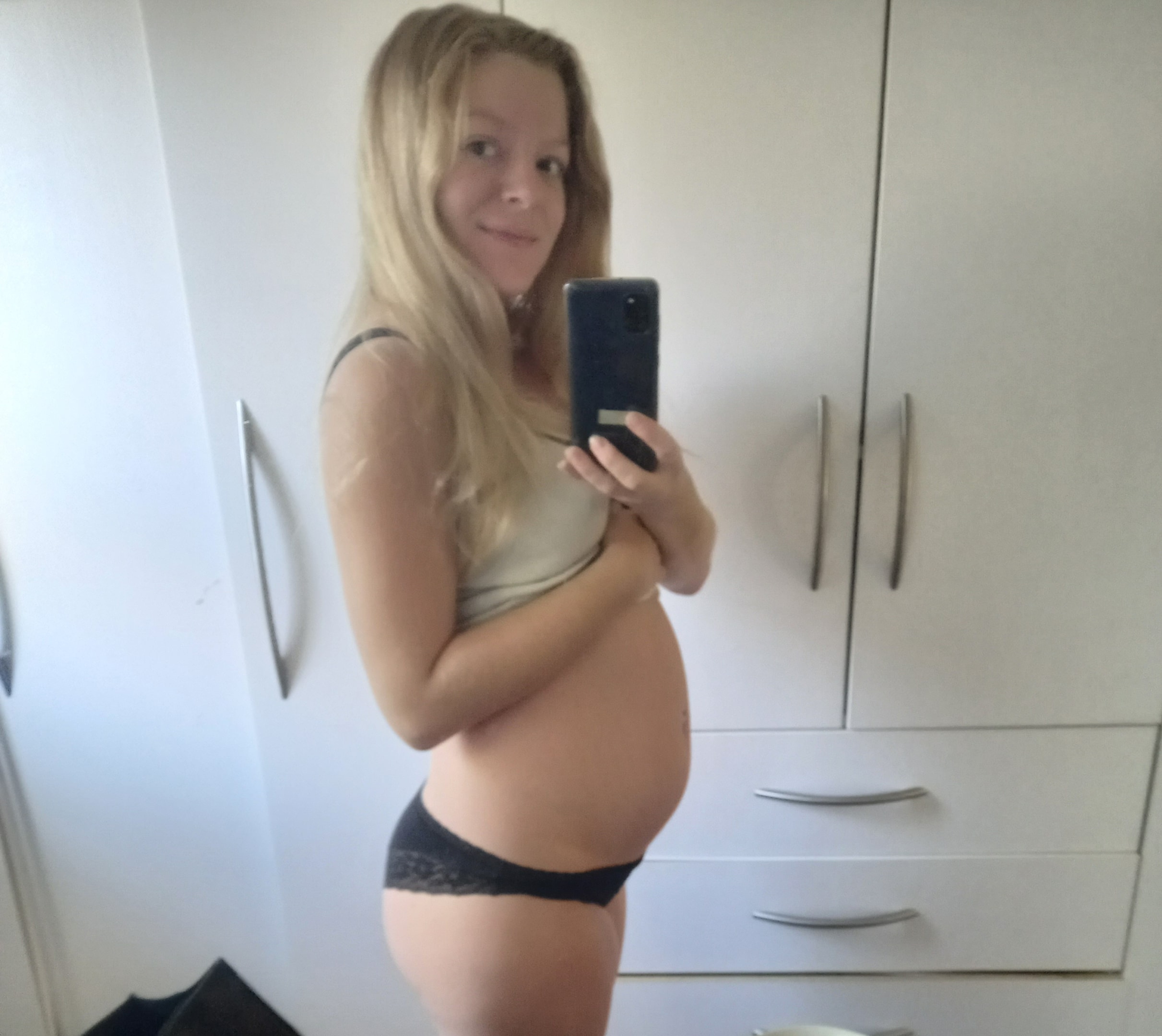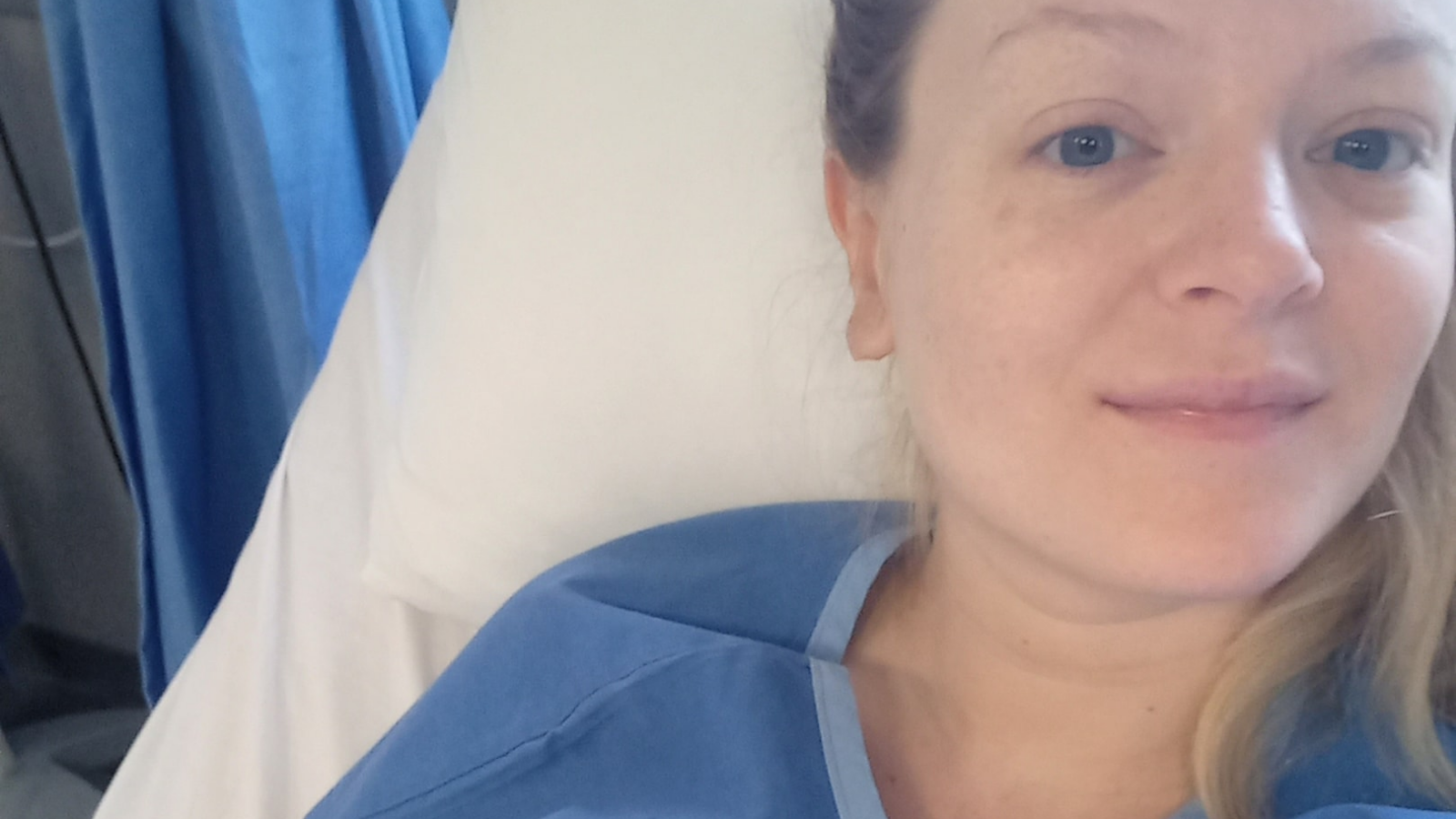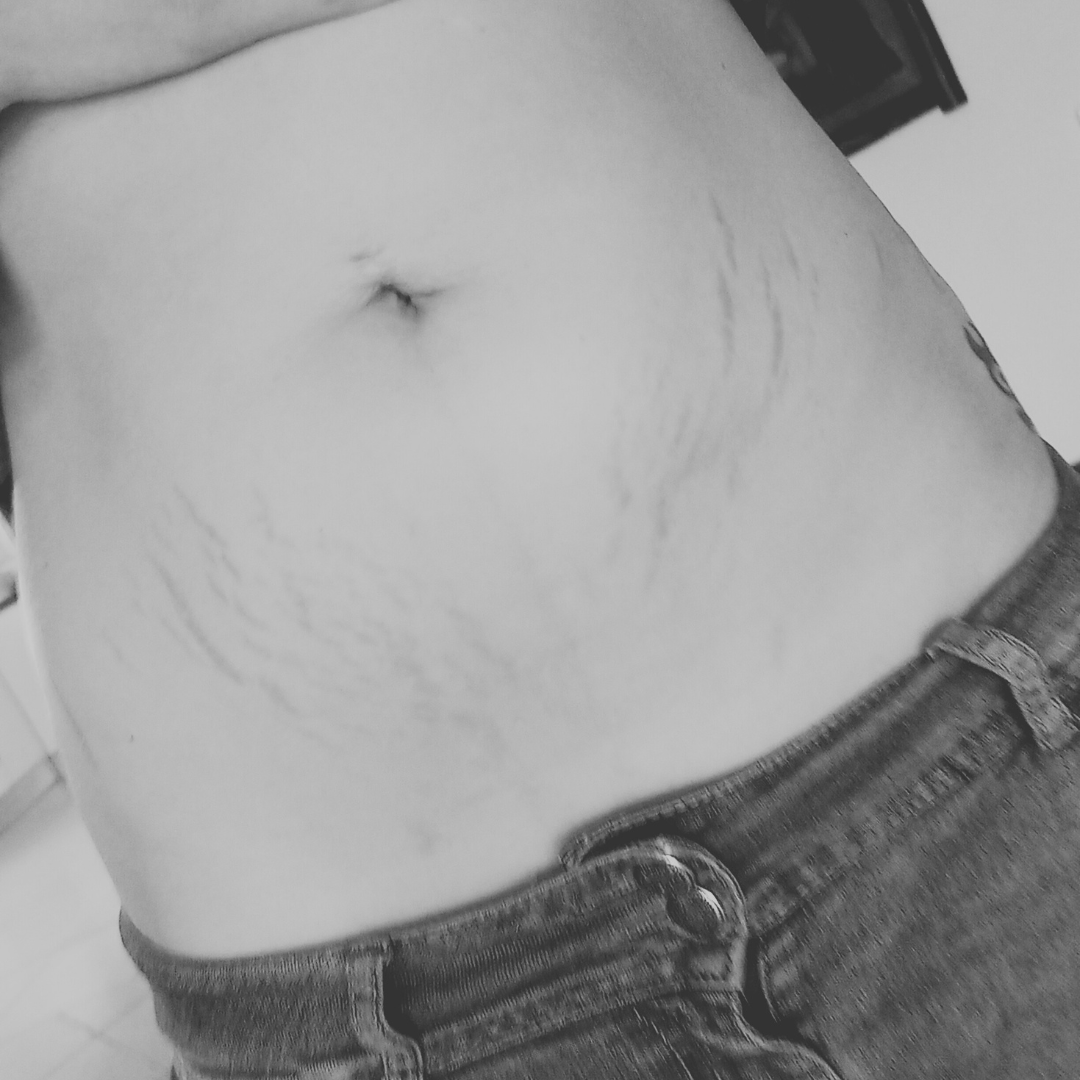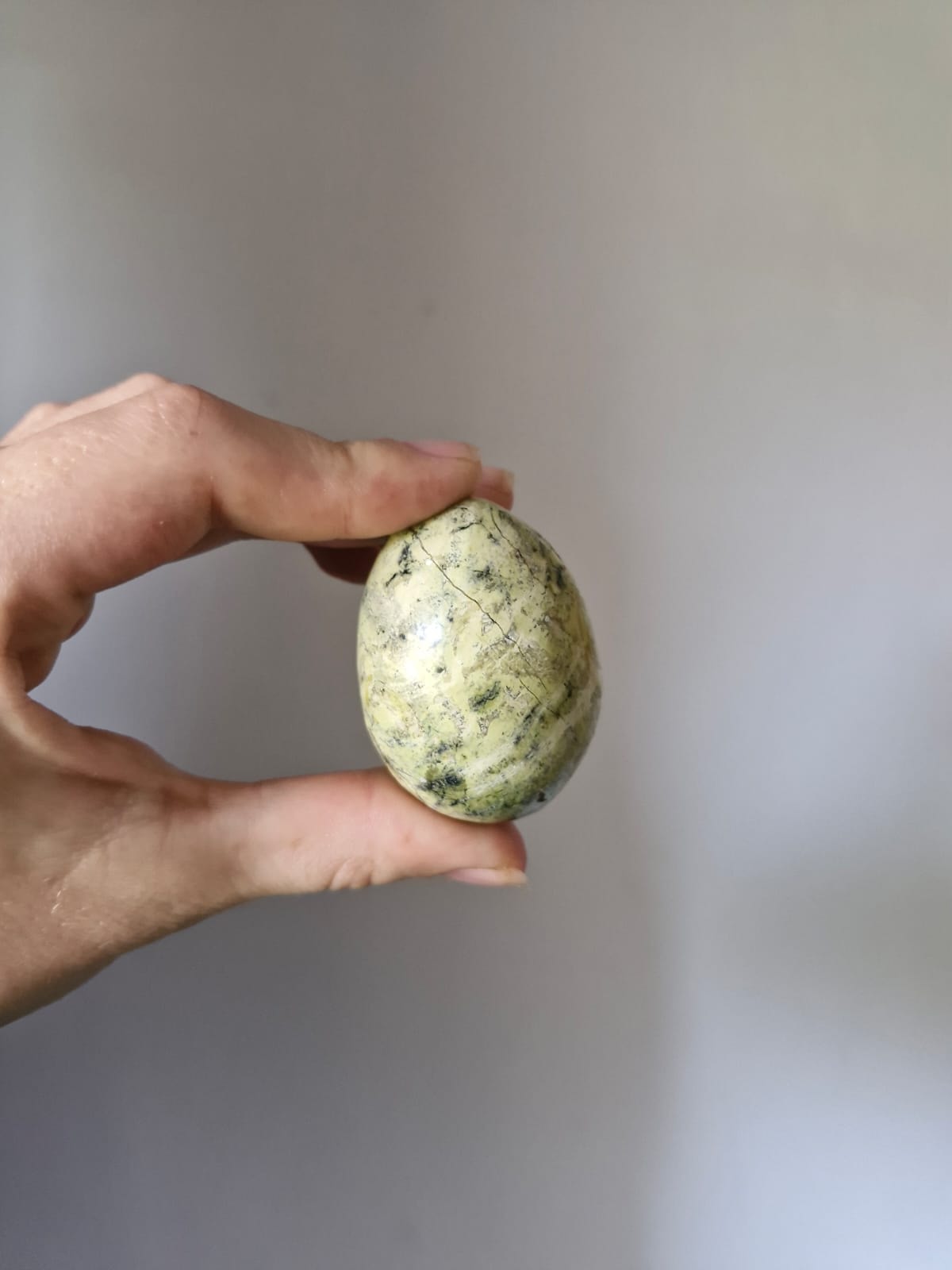
Table of Contents ▾
Bladder prolapse wasn’t even in my vocabulary when I gave birth. I’d heard about tearing, leaking, even pelvic floor issues, but prolapse? What is that?
By my third trimester, my son was sitting low. So low that walking was challenging. I had to pee constantly, and there was a dull heaviness in my pelvis, but I figured it was just part of being near the end of pregnancy.
After birth, the pressure didn’t go away, it got more noticeable. I couldn’t stand for long without feeling a pulling sensation, and there was this feeling that something wasn’t quite where it used to be.
Eventually, I learned I had a bladder prolapse. It turns out nearly 50% of women who’ve been pregnant will experience some form of prolapse.
This article is about what worked for me, the physical tools, the specific pelvic floor techniques, and the mindset shifts that actually made a difference.
A Chain Reaction of Trauma

From the beginning, my pregnancy was difficult. I had hyperemesis gravidarum.
This is not just nausea or morning sickness. It is relentless, full-body vomiting that hijacked my system for months. I couldn’t keep down water, id wake up gagging, go to bed dehydrated, and spend the hours in between vomiting into whatever was closest. Some days I lost count.
People told me it was just “bad morning sickness.” But that label doesn’t even begin to cover it.
Hyperemesis gravidarum (HG) affects 1-3% of pregnancies. Around 59,000 pregnant women in the U.S. each year deal with it, often silently. Even public figures like Kate Middleton have had it during all three of her pregnancies.
Each retch felt like a seizure. My abdominal muscles would lock up so hard I’d break into a sweat. I could feel the pressure shoot down into my pelvis, hitting my bladder and pelvic floor like a blow. Over and over again, with no time to recover.
The truth is, I didn’t realize how much damage it was doing until I tried to stand up and felt like my body no longer had a base. By the second trimester, I could barely get out of bed without bracing. And I hadn’t even given birth yet.
Then, postpartum, when my body should’ve been repairing itself, I got sick. A deep, chesty bronchial infection that had me coughing for weeks. Every time I coughed, I leaked. One day, after a particularly bad coughing fit, I stood up and felt it, that something shifted. These risk factors, including the severe vomiting and persistent coughing, contributed significantly to my condition.
Medical Advice vs. Intuition: Choosing My Own Healing Path
The doctor scanned my chart, did a quick internal check, and said, “It’s only a grade 1. You’ll be fine.” I nodded, but inside I knew, this wasn’t fine.
She told me to avoid lifting anything heavy, and suggested I “give it time.” But the dragging sensation wasn’t going away. I started noticing how much I was adjusting to avoid discomfort, standing differently, walking slower, limiting how long I stayed on my feet.
So I made the decision to take ownership. I started reading, learning, and paying attention to how I moved, breathed, sat, and stood. I realized a lot of my pelvic strength was linked to coordination, posture, pressure management, and learning to work with my body.
That same approach is echoed by experts like Paul Roscioli, a chiropractic physician and owner at Main Line Disc:
“Pelvic organ prolapse can be overwhelming but healing is possible with the right approach. I found that pelvic floor exercises, combined with posture corrections and mindful breathing, help improve the condition significantly. Once you understand your body's needs and take control, your confidence will grow.”
The Lipoma Surgery That Made Everything Worse

Three weeks postpartum, I had a lipoma removed from my groin. It was something I’d been planning to take care of for a while. The timing wasn’t ideal, but it had started to grow and press against a nerve. So we scheduled the surgery.
It was supposed to be straightforward, anesthetic, quick recovery, back home the same day. But what no one really talks about is what “minor” surgery feels like when your body has already been through birth, tearing, and the early weeks of postpartum recovery. The surgical repairs impacted my recovery significantly, making it harder to regain stability.
And just like that, whatever small stability I was beginning to rebuild was gone. The internal coordination I was slowly regaining felt disorganized again.
Two separate events, birth and surgery, within weeks of each other, both affecting the same area. And neither came with much aftercare beyond “take it easy.” But what does that even mean when you’re caring for a newborn, breastfeeding around the clock, and your body feels like its been through a literal war?
The surgery didn’t “cause” my prolapse. But it added weight to a structure that was already overloaded. Sometimes it’s not one big event, but more the layering of small disruptions that the body never gets a chance to fully recover from.
Starting to Rebuild: My First Steps Toward Healing
Once I had a name for what was happening, bladder prolapse, I started researching. I wanted to understand what was actually going on in my body and what I could do about it.
I learned that the pelvic floor doesn’t work in isolation. It’s part of a system, connected to breath, alignment, pressure, and the way we move through daily life.
So I started with the basics.
The first thing I worked on was breathing. Specifically, diaphragmatic breathing while lying on my back, knees bent, feet flat on the floor. One hand on my ribs, one on my belly. I practiced letting the breath move down into my abdomen and pelvic bowl. I paid attention to whether I was holding my breath or clenching without realizing it.
I added in small movements. Gentle pelvic tilts while lying down. Shifting my pelvis forward and back, just enough to wake up the deep stabilizers without triggering discomfort. I looked at posture next. I noticed how often I stood with my pelvis tucked under, or with my hips pushed forward. I started making small adjustments, stacking my ribs over my hips, softening my knees, distributing my weight more evenly.
I stopped bending from my waist to pick things up. I squatted instead. I stopped standing still for long periods, especially at the end of the day. I propped myself up when I sat, avoided deep couches (these are the literal worst), and paid attention to how I transitioned from sitting to standing.
Eventually, I started walking again, short distances, on flat ground. Five to ten minutes max. I focused on posture, breath, and how my body felt during and after. Some days I could go a little farther. Other days I’d cut it short.
Yoni Eggs and Reconnecting With Internal Strength
My first yoni egg yoni egg. (Shes taken a few tumbles since and has a few small cracks now)
My internal tissues were still recovering, and I didn’t want to introduce any tools until I felt confident that my body could tolerate it without discomfort or added strain. I waited until I had enough baseline strength to stand and walk without pressure, and enough internal feedback to know when something felt off.
For me, that meant:
-
I could walk and stand for long periods without feeling internal pressure.
-
My bladder symptoms had stabilized.
-
I had enough internal awareness to recognize the difference between heaviness, fatigue, or muscular engagement.
-
There was no bulging when upright, and no pain during daily activity.
That’s when I started reading about women using yoni eggs for tactile feedback and rebuilding communication between brain and muscle.
The first few times, I used the egg lying down. I inserted it slowly, using a small amount of organic oil for comfort, and rested on my back with knees bent. I would inhale deeply, allowing my belly and pelvic floor to soften, then exhale and gently notice if my body could engage around the egg
Over the course of a few weeks, I developed a simple routine with short sessions, always lying down or seated upright on a firm surface, always with breath as the foundation. I paired the egg with diaphragmatic breathing, sometimes adding a gentle pelvic tilt to bring in coordination between core and floor.
The egg gave me a tactile point of reference. I could tell when I was gripping too much. I could feel when my body was trying to compensate elsewhere. It helped me slow down and work with the right muscles.
Eventually, I began incorporating light movement, standing with the egg in, practicing posture, walking short distances in the house. What I noticed after a few weeks was that my internal awareness improved. The egg didn’t fix the prolapse. But it gave me structure, focus, and direct feedback at a time when I needed all three, and it helped retrain subtle neuromuscular connections.
Shedding Weight, Releasing Pressure
In the two months following childbirth, I went from 96kg to 70kg. I wasn't on any diets and didn't put in a lot of effort, it was from the physical intensity of early motherhood, nursing, night feeds, emotional load, recovery. My body let go of the weight rapidly, and I noticed the difference in how I moved almost immediately.
The first thing I felt was the absence of pressure. That deep, downward heaviness I’d grown used to began to ease. I didn’t have to lean against the counter while cooking or crouch down halfway through folding laundry.
The day-to-day management felt more possible. Less strain on my system meant my breath work improved. I had more space to move and more space to correct my posture without everything fatiguing so quickly.
Weight loss didn’t solve the prolapse, but it shifted the environment my body was working within. And that made the work I was already doing, breath, alignment, walking, start to land more effectively, because my system had more space to re-pattern without compensating just to stay upright.
Emotional Healing: Reclaiming Trust in My Body

I was 27. Still technically “young,” but I didn’t feel it. My body felt older than me. Unfamiliar and compromised. I had gone from a young hot babe to a mom who had to strategize how to pick up laundry without triggering pelvic pressure.
I’d look at women my age who hadn’t had kids yet, and feel jealous of their structure and their unbroken baseline. People talk a lot about how pregnancy changes your body. But until you’re in it, living with the aftershocks, it’s hard to explain what that actually feels like. The physical symptoms get the airtime, weight gain, stretch marks, hormonal shifts, but no one really talks about what it’s like to lose that quiet, baseline trust in your body, and to feel like your body is something you now have to monitor.
That loss of trust was the hardest part.
I used to take my body for granted. It worked, and I didn’t think too hard about how. But pregnancy, birth, and prolapse pulled me out of that unthinking state. Suddenly I was aware of every system, breath, core, pelvic floor, because none of them felt automatic anymore.
And that awareness, while uncomfortable at first, is what changed things for me. It made me realize that staying connected to my body, really connected, isn’t something we’re taught, but it’s essential. Especially for women, and especially for those of us who’ve gone through big physical transitions. And not just during healing. We need this always.
It’s why now, even though I’ve recovered a lot of function, I still check in. I notice how I’m standing. I pay attention to how I’m breathing. I use the tools that keep me connected, like my yoni egg, as a way to stay in relationship with my internal body.
My body has changed. My skin is marked. My posture is different. I don’t expect to look or feel the way I did before. But that doesn’t mean I’ve lost something. If anything, I’ve gained a kind of respect I didn’t have before.
I used to look at my stretch marks and want to hide them. Now they just feel like part of the story. They’re not pretty, they’re deep and messy and sharp. But they remind me of what I carried. What I came through. What my body made space for. Motherhood cracked open something in me. And on the other side of that, I had to learn how to show up for myself differently.
My son reminds me that my body is a vessel, for holding and nurturing. I don’t need it to be perfect. What I do need is to feel like I can live in it. That I can come home to it, even when it’s tired, stretched, or different from what it used to be.
If You’re in It Right Now, Here’s What I Want You to Know
Prolapse is common. It affects more women than we’re led to believe. But just because it’s common doesn’t mean you have to quietly live with it or accept it as your new normal.
You can make progress. Your body is responsive, and with the right support, it can adapt. If you’re in the early days of this, know it’s possible to feel steady again.
I hope this article offers some kind of reference point, something to help you feel a bit less alone in the process. Take what’s useful, leave what’s not. And trust that your body is still capable of everything you wish, even if it looks different than before.
FAQ
In many cases, yes—especially with a very mild prolapse or mild prolapse, it’s possible to support natural healing through consistent changes in movement, lifestyle, and targeted pelvic floor muscle training.
I healed my prolapse without surgery by addressing pelvic floor dysfunction, reducing intra-abdominal pressure, and learning to move and breathe in ways that supported my pelvic organs instead of pushing against them. For most women, especially those diagnosed with POP (pelvic organ prolapse) early on, there are treatment options that don’t involve surgery. An early POP diagnosis is crucial as it allows for timely intervention and increases the chances of successful non-surgical treatment.
Supporting pelvic floor function means treating common aggravators, like constipation, improper breathing, or lifting heavy objects, and replacing them with better habits. It also means strengthening not just the pelvic muscles, but the full support system, including connective tissue, abdominal wall, and postural habits that protect the pelvic outlet and vaginal walls.
Working with a pelvic floor therapist or physical therapist is often a helpful step in this healing journey.
Kegels, or more specifically, well-guided pelvic floor exercises, can absolutely help. If you have a weak pelvic floor, Kegels can help rebuild pelvic floor strength and improve organ support, especially in the early stages of a prolapse diagnosis. However, for many women, especially those with posterior wall prolapse or poor coordination, simply doing Kegels without understanding how to fully relax or engage the pelvic floor can make symptoms worse.
Kegels are just one part of a full approach to pelvic health. A strong pelvic floor also involves learning how to lengthen and lift the pelvic muscles rhythmically with your breath and movement.
“Shrinking” a prolapse isn’t always the goal, but improving organ support and reducing prolapse symptoms is very possible. I healed my prolapse by learning how to manage intra-abdominal pressure with yoni eggs, improve pelvic floor strength, and reduce straining during bowel movements. Working with a pelvic floor therapist helped me retrain my pelvic muscles and stop overcompensating in other areas like my glutes or abs.
Addressing constipation, adjusting how I moved, and avoiding things like heavy lifting or high-impact exercise early on also helped relieve the dragging sensation and improve my pelvic floor function over time. For some women, a vaginal pessary can help support the pelvic organs within the vaginal canal and reduce symptoms like stress urinary incontinence.
Yes, healing prolapse is possible, though “healed” may look different depending on the severity and type. I healed my prolapse without surgery, through a mix of specific exercises, physical therapy, breathwork, and behavior changes that supported my pelvic floor instead of stressing it. Healing doesn’t always mean the pelvic organs are exactly where they used to be. It means the symptoms no longer significantly affect your daily life. You can move, lift, have sex, and go about your day without feeling like something’s “falling out.”
For mild or very mild prolapse, non-surgical treatment options are often enough. For severe prolapses, surgical repair may be necessary, but even then, addressing underlying pelvic floor dysfunction is critical to prevent recurrence, especially during subsequent pregnancies. Healing is a process. It involves re-learning how to breathe, how to move, how to avoid unnecessary strain. It also means working with your connective tissue, pelvic floor, and vaginal tissues in a way that supports, not overloads, the system.

